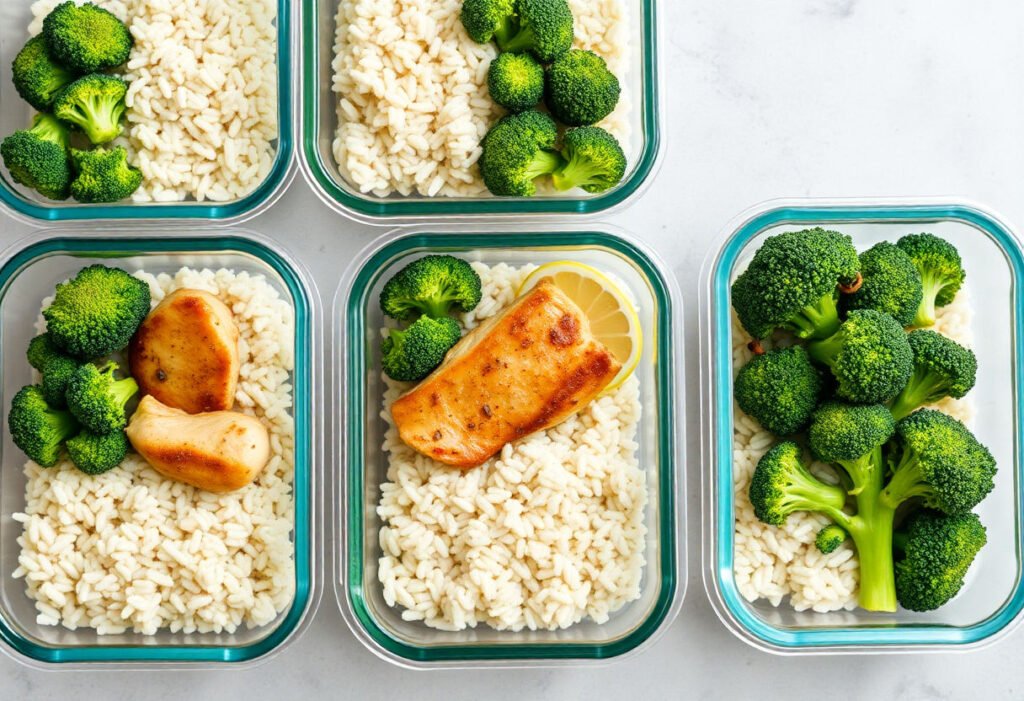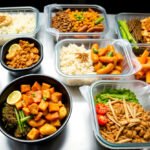Mastering meal prep can transform your culinary routine into an efficient, cost-effective practice, and this guide focuses on the essentials: chicken, rice, and broccoli. By delving into the fundamentals of meal prepping, we aim to simplify the process while highlighting the health, time-saving, and financial benefits it offers. From selecting the finest ingredients to perfecting cooking techniques, this comprehensive exploration ensures your meals are both delicious and nutritious. With expert insights into storage and reheating, this article equips you with the strategies needed to maintain taste and quality, encouraging a seamless incorporation of meal prep into your lifestyle.
Key Takeaways
- Meal prepping with chicken, rice, and broccoli offers a balanced approach to nutrition, ensuring a consistent intake of essential nutrients.
- Preparing meals in advance significantly saves time and reduces stress during the week, allowing for more efficient daily routines.
- Choosing high-quality ingredients, such as free-range chicken and fresh produce, enhances the taste and nutritional value of each meal.
- Properly storing and reheating meals maintains flavor and texture, making it easier to enjoy prepared dishes throughout the week.
- Understanding various cooking techniques for each ingredient allows for diverse meal options while keeping flavors fresh and exciting.
Understanding Meal Prep Benefits

Meal prepping, particularly with staples like chicken, rice, and broccoli, offers a multitude of benefits that can significantly enhance your lifestyle. One of the primary health benefits is the ability to control portion sizes and nutritional content more effectively. By preparing meals in advance, you can avoid the pitfalls of fast food and unhealthy snacks, leading to better overall dietary habits and supporting goals such as weight loss or muscle gain.
The time-saving benefits of meal prepping cannot be overstated. By dedicating a few hours a week to cooking and organizing your meals, you free up valuable time on busy weekdays. This efficient use of time not only reduces stress but also ensures that you have nutritious meals readily available, minimizing the temptation to opt for less healthy options.
Financial savings are another compelling benefit of meal prepping. By purchasing ingredients in bulk and preparing meals at home, you can significantly cut down on expenses compared to dining out. This approach allows you to plan your meals based on cost-effective options, reducing food waste and promoting a more sustainable lifestyle.
Furthermore, meal prepping encourages a sense of discipline and organization. It instills a routine that can lead to long-term healthy habits, fostering a deeper understanding of your nutritional needs. As you master the art of meal prepping with simple ingredients like chicken, rice, and broccoli, you not only enrich your cooking skills but also create a balanced lifestyle that benefits your physical and mental well-being.
Essential Ingredients and Tools
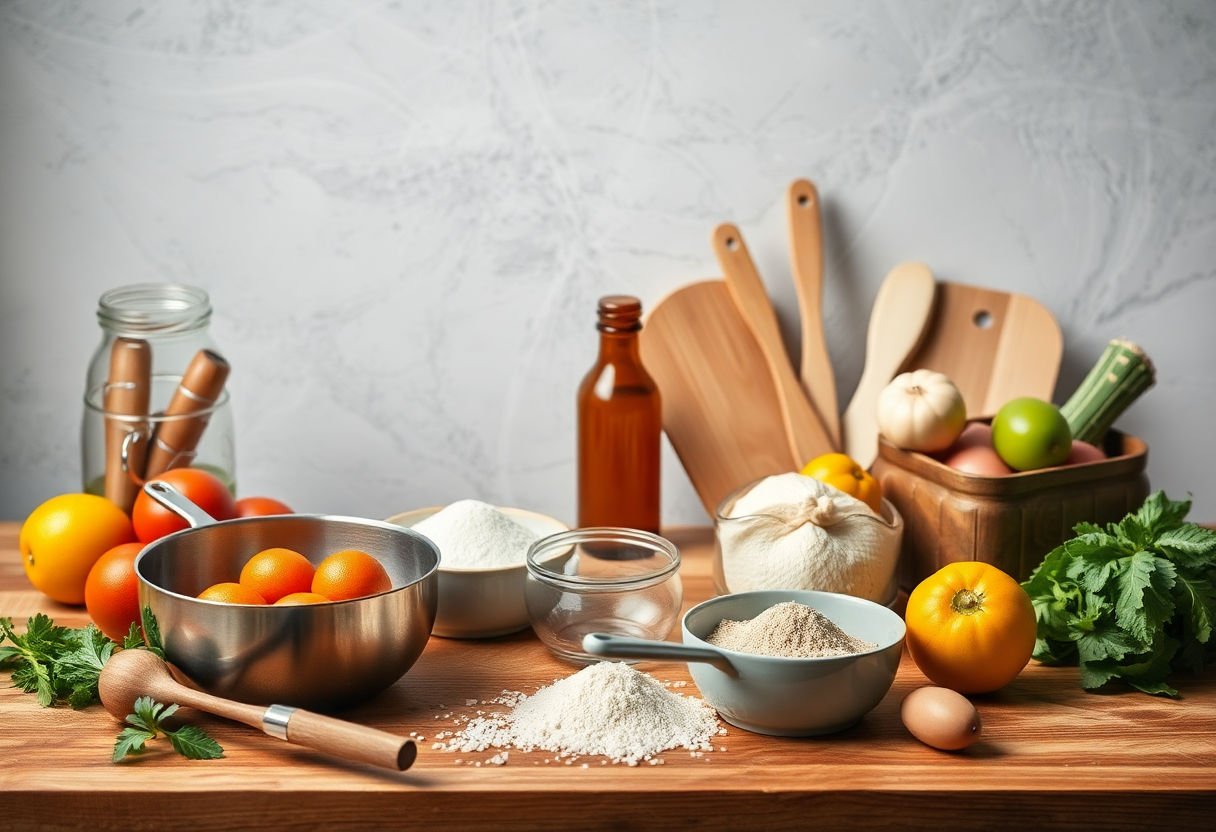
To successfully master meal prepping with chicken, rice, and broccoli, having the right ingredients and tools is essential. The core ingredients required for this meal prep are straightforward yet versatile:
- Chicken: Opt for high-quality chicken breasts for lean protein. When selecting chicken, ensure it is free-range and organic whenever possible for the best nutritional value.
- Rice: Choose between white, brown, or jasmine rice based on preference. Each type brings its unique taste and nutritional benefits.
- Broccoli: Fresh or frozen broccoli are both excellent choices. Look for bright green florets with firm stems for optimal freshness.
Accompanying these key ingredients, several tools can streamline your meal prep process:
- Sharp Knife and Cutting Board: Essential for efficiently chopping chicken and vegetables.
- Rice Cooker: Offers convenient, hands-off cooking for perfectly prepared rice.
- Steamer Basket: Key for steaming broccoli to maintain its nutrients and crisp texture.
- Non-stick Pan or Grill: Useful for evenly cooking chicken without added fats.
- Storage Containers: Invest in BPA-free, microwave-safe containers in various sizes for portioning your meals.
Incorporating these ingredients and tools into your meal prep routine not only enhances the efficiency and ease of cooking but also ensures each dish is flavorful and nutritious. Remember, high-quality ingredients and reliable tools are foundational to mastering the art of meal prep.
Cooking Techniques for Chicken
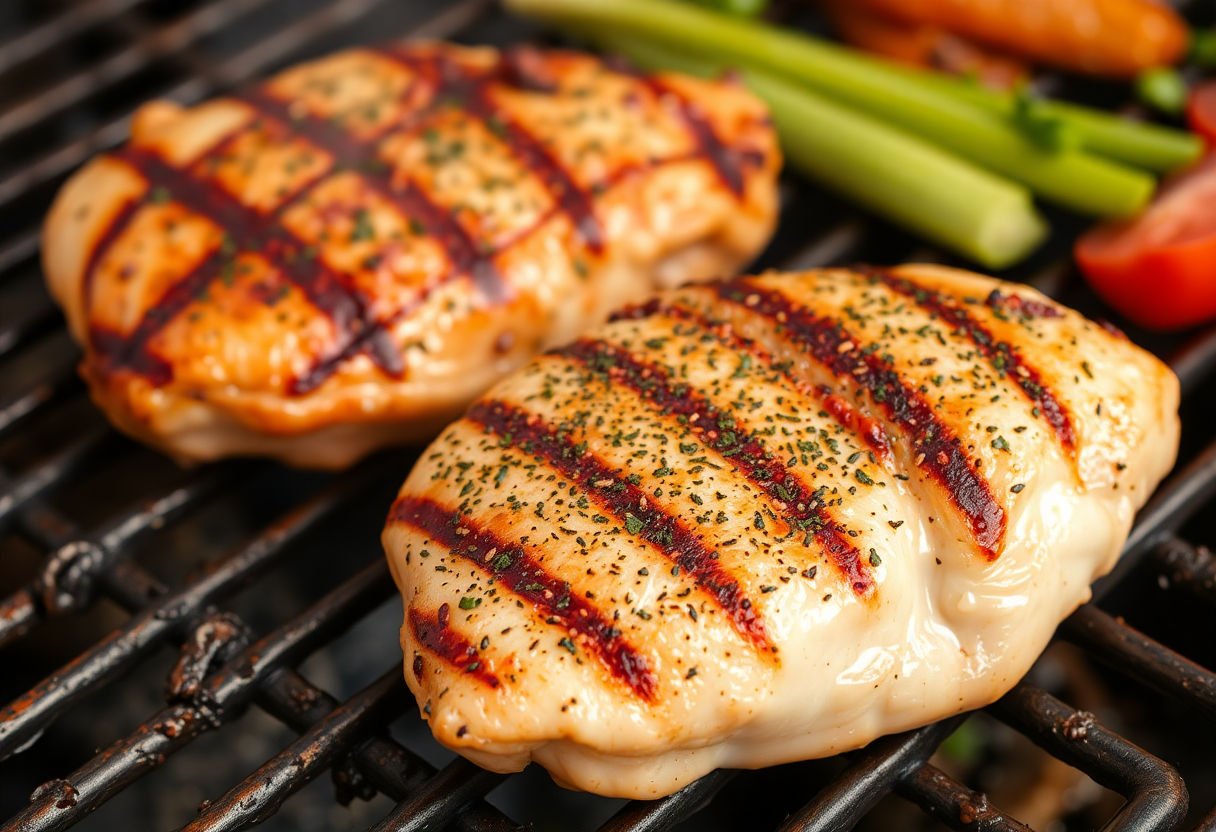
Grilling is a popular method for cooking chicken that infuses a smoky flavor while keeping it healthy. To ensure a juicy texture, marinate your chicken beforehand using a mixture of olive oil, lemon juice, and herbs. This not only enhances the flavor but also tenderizes the meat. When grilling, keep the heat medium-high and cook each side for approximately 6-7 minutes.
Baking is another excellent technique, especially when preparing large batches for meal prep. Preheat the oven to 375°F (190°C) and arrange the chicken pieces on a baking sheet. Season generously with salt, pepper, and your choice of spices. Bake for 20-25 minutes, ensuring an internal temperature of at least 165°F (74°C), which is critical for safety.
For those who prefer moisture-retaining methods, poaching is a suitable option. Simmer chicken in a pot of broth or water with aromatics like bay leaves, garlic, and onion. This gentle cooking process preserves the moisture content, making it ideal for salads or sandwiches.
Sautéing is a quick and efficient way to prepare chicken, requiring only a sauté pan and some oil. Heat the pan and add chicken pieces, cooking over medium-high heat until browned and cooked through. This method allows for flexibility with seasoning and is perfect for stir-fry dishes.
Incorporating these varied cooking methods not only maintains the chicken’s nutritional value but also introduces an array of flavors and textures, essential for keeping meal choices exciting during the week. Opt for techniques that align with your taste preferences and meal prep goals, ensuring a delicious and wholesome experience.
Rice Cooking Tips
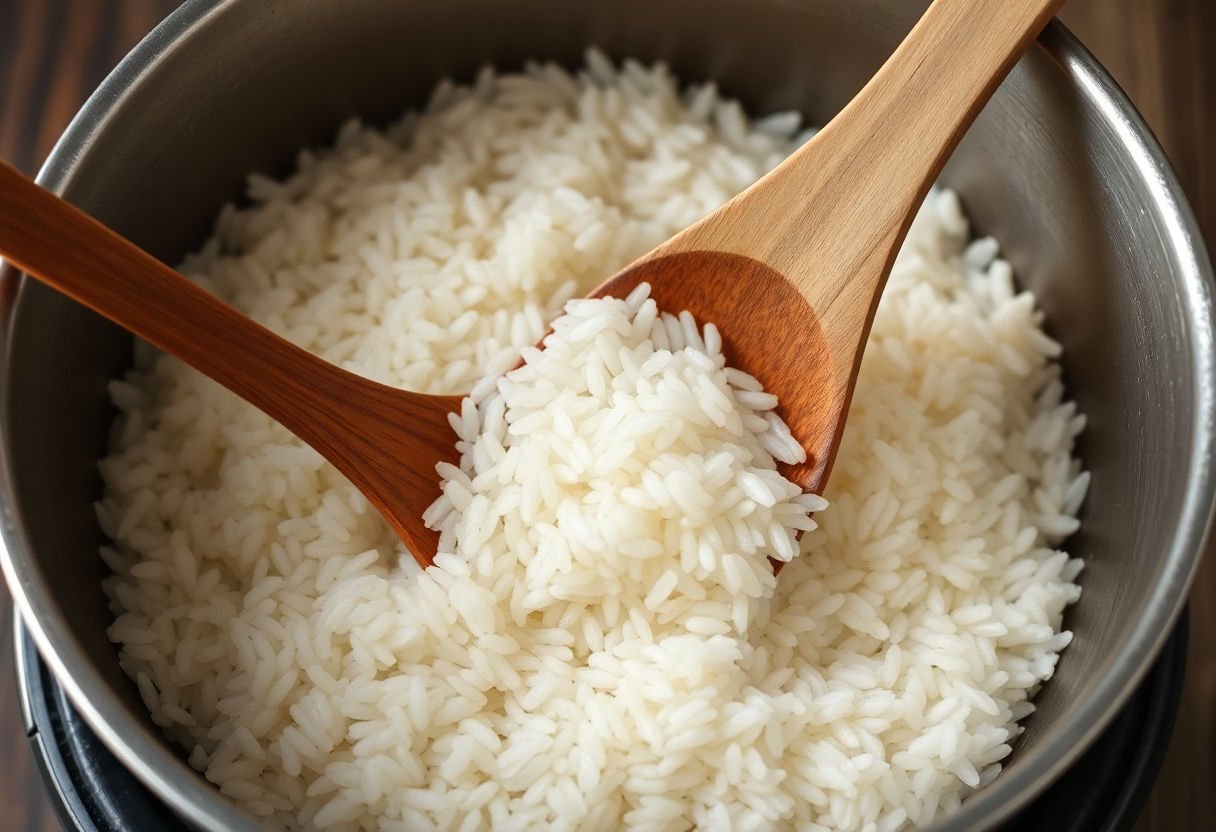
To perfect the art of cooking rice for meal prep, it is essential to focus on a few techniques ensuring both efficiency and taste.
Selecting the Right Rice: The first step is choosing the right type of rice. Long-grain varieties such as basmati or jasmine are ideal for meal prep due to their fluffiness and distinct flavor. Brown rice is a healthy alternative, offering more fiber, but requires a longer cooking time.
Rinsing is Key: Always start by rinsing the rice in cold water. This process removes excess starch, which can cause the rice to become sticky and clump together during cooking.
Perfect Water-to-Rice Ratio: For white rice, use a ratio of 1 cup of rice to 1.5-2 cups of water. Brown rice requires more moisture, with a suggested ratio of 1 cup of rice to 2.5 cups of water. Using the correct amount of water prevents undercooked or mushy rice.
Use a Rice Cooker or Simmer Method: A rice cooker is a convenient tool for consistent results, but the stovetop simmer method is equally effective. Bring the rice and water to a boil, then lower the heat and cover the pot, allowing it to simmer for about 18-20 minutes for white rice and 35-40 minutes for brown rice.
Let it Rest: Once cooked, allow the rice to rest for 10 minutes, covered. This step ensures even moisture distribution and fluffier rice.
By mastering these techniques, you ensure that your rice complements each meal prep without compromising quality or taste.
Perfectly Steamed Broccoli
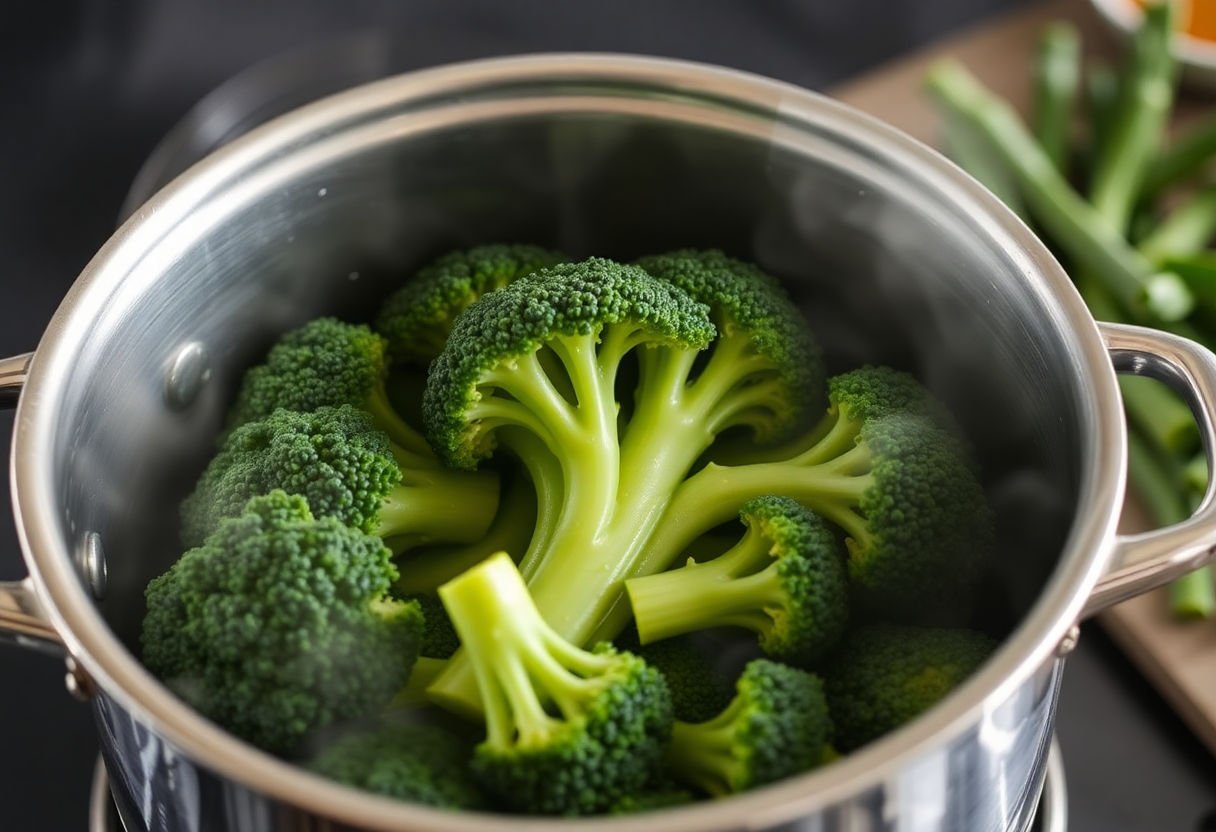
To achieve perfectly steamed broccoli, which maintains both its vibrant color and nutritional integrity, careful attention to preparation and timing is essential. Broccoli is a powerhouse of vitamins, including vitamin K and vitamin C, along with essential fiber that supports digestive health. Steaming is an ideal cooking method as it preserves these vital nutrients better than boiling or frying.
Preparation:
- Begin by selecting fresh, firm broccoli with tightly packed florets and deep green color. Avoid any yellowing or limp signs, as these indicate aging.
- Wash the broccoli thoroughly under cold water to remove any dirt or pesticides.
- Trim the stem, peeling the tough outer layer if desired, and cut the broccoli into uniform florets to ensure even cooking.
Steaming Technique:
- Equipment Needed: A steaming basket or an insert that fits into a pot with a lid is necessary to prevent the broccoli from coming into contact with boiling water.
- Fill the pot with about an inch of water and bring it to a boil.
- Place the broccoli florets in the steaming basket evenly, avoiding overcrowding to allow steam circulation.
- Steam for approximately 4-7 minutes, depending on the desired tenderness. The broccoli should be bright green and slightly crisp, not mushy.
Final Touches:
- Season lightly with salt and a sprinkle of lemon juice, which enhances flavor without overpowering.
- For those seeking more taste, a drizzle of olive oil or a sprinkling of parmesan cheese can be added.
Perfectly steamed broccoli is a cornerstone of nutritious meal prep, seamlessly pairing with chicken and rice to create balanced, hearty dishes.
Combining Chicken, Rice, and Broccoli
Enhancing your meal prep routine with chicken, rice, and broccoli not only ensures a nutritious foundation but also promotes variety and culinary creativity. Here are some strategic approaches to make the most of these classic ingredients:
Balancing Flavor Profiles
Creating appealing meals hinges on striking a balance between flavors. Chicken serves as the protein backbone, easily absorbing marinades and spices. Consider using a mix of herbs like thyme or rosemary, a squeeze of citrus, or sauces like teriyaki for diverse taste experiences. Rice offers a neutral base that complements the stronger flavors of chicken and broccoli. For an enhanced palate, think about adding flavored broths or a hint of saffron during cooking. Broccoli, with its slightly bitter and earthy taste, provides a fresh contrast. Add a sprinkle of lemon zest or low-fat cheese for added zest.
Maximizing Nutritional Content
A combination of chicken, rice, and broccoli guarantees a meal rich in protein, fiber, and essential vitamins. To maximize these benefits, consider the cooking methods: grilling or baking chicken preserves protein quality, while steaming broccoli retains its nutrient density. For rice, opt for brown or wild varieties to increase fiber and antioxidants.
Integrating Meal Variations
To stave off monotony, embrace the diversity of your ingredients by experimenting with diverse meal formats such as:
- Stir-fries, incorporating soy sauce and garlic.
- Casseroles, blending a creamy sauce and topped with cheese.
- Bowls, with added toppings like avocado or nuts for extra texture.
In conclusion, crafting meals with chicken, rice, and broccoli offers endless possibilities for creative, balanced, and nutritious meal prep solutions.
Storing and Reheating Tips
To ensure your meal-prepped chicken, rice, and broccoli remain flavorful and safe to eat throughout the week, proper storage and reheating methods are essential. Here are some best practices to follow:
Storage Guidelines:
- Use Airtight Containers: Store meals in airtight containers to prevent moisture loss and contamination. Glass or BPA-free plastic is recommended for both durability and safety.
- Refrigeration: Keep your meals in the refrigerator at temperatures below 40°F. Consume them within 3-4 days for maximum freshness and food safety.
- Freezing: For longer storage, freeze meals. Ensure containers are labeled with the date, and try to consume them within 2-3 months for the best taste.
Reheating Practices:
- Even Heating: When reheating, stir or rotate the dish halfway through to ensure even heating. This prevents cold spots that can harbor bacteria.
- Microwave Tips: Use a microwave-safe cover to trap steam and heat more uniformly. Add a sprinkle of water to rice before reheating to restore moisture.
- Oven Reheating: Preheat the oven to 350°F and cover the dish with aluminum foil to keep it moist. This method works well for larger quantities.
- Stove Top Reheat: For chicken, use a skillet with a dash of broth or water. Heat over medium until thoroughly warmed, which can help retain juiciness and flavor.
By following these procedures, you can enjoy delicious and healthy meals throughout the week, without sacrificing any of the taste and quality.
Conclusion
Embracing meal prep with chicken, rice, and broccoli simplifies healthy eating, providing a balanced diet that saves both time and money. By mastering cooking techniques and using optimal storage and reheating methods, you ensure these meals remain nutritious and flavorful throughout the week. As lifestyles become busier, meal prepping not only supports wellness goals but also offers a practical approach to dietary consistency. Continue refining your techniques, and consider exploring additional ingredient combinations, ensuring this practice adapts to changing nutritional needs and preferences. Take pride in this efficient method that nourishes your body while fitting seamlessly into a modern lifestyle.
Frequently Asked Questions
How long can I store meal prepped chicken, rice, and broccoli in the refrigerator?
You can safely store meal prepped chicken, rice, and broccoli in the refrigerator for up to four days. Ensure they are kept in airtight containers to maintain freshness and prevent contamination.
Can I freeze the meal prepped dishes, and if so, for how long?
Yes, you can freeze your meal prepped chicken, rice, and broccoli. Properly stored in suitable freezer containers, these meals can last up to three months while preserving their taste and nutritional benefits.
What is the best reheating method to maintain the quality of each ingredient?
The best method is to reheat the meal in a microwave or oven at a low setting, which helps to prevent the chicken from drying out and keeps broccoli crisp. Stirring occasionally ensures even heating.
How do I prevent the chicken from becoming dry when reheated?
Marinating the chicken or cooking it with a bit of broth or sauce can help retain moisture. Additionally, reheating it gently over low heat will keep it juicy and flavorful.
Is it essential to follow specific portions of chicken, rice, and broccoli?
While the portions can be adjusted based on your nutritional needs, a balanced meal typically includes a serving size of 3-4 ounces of chicken, half a cup of cooked rice, and a cup of steamed broccoli. Adjust according to your dietary goals and preferences.
